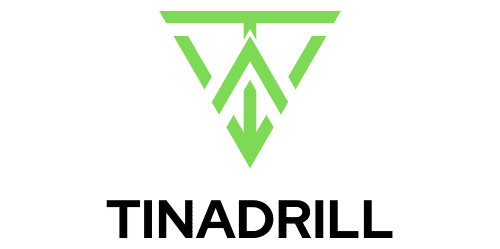Top 10 tools to streamline capacity planning

Choosing the right capacity planning tool can revolutionize how you manage resources and projects. We've curated the top ten tools to streamline resource management for 2024, featuring the latest trends in automation and integration. Discover the key features, user insights, and pricing details to make informed decisions. Let's delve into the best solutions to optimize your business efficiency and minimize manual data entry.
Top capacity planning tools for 2024
Capacity planning tools are essential in today's dynamic market for aligning team resources with project demands. These tools help project leaders ensure that their teams have the necessary capacity and resources to meet project requirements, enhancing productivity and efficiency.
A découvrir également : What Are the Best Strategies for Retaining Talented Employees in the UK’s Competitive Tech Industry?
Trends in capacity planning software for 2024
In 2024, capacity planning software is expected to integrate advanced analytics and AI to provide deeper insights and predictive capabilities. Seamless ERP and project management integration will minimize manual data entry, making resource management more efficient. Real-time collaboration tools will also feature prominently, enabling teams to work together more effectively.
Top capacity planning tools
Toggl Plan: This tool offers a comprehensive project management interface, allowing for easy tracking and planning of capacity across projects, teams, and tasks.
Avez-vous vu cela : How to Foster a Culture of Continuous Learning in UK Corporate Training Programs?
TeamUp Shared Calendar: Focused on scheduling work and managing availability, this calendar format provides a clear visualization of workloads.
Kantata (formerly Mavenlink): A full-service resource management tool, Kantata excels in forecasting and planning, making it ideal for optimizing resource utilization.
Smartsheet: Known for its simple resource allocation and dynamic reporting, Smartsheet supports accurate project planning and time tracking.
Float: This tool provides accurate views of workloads, statuses, time-off, holidays, and future projects, aiding in effective capacity planning.
Resource Guru: With user-friendly resource scheduling and leave management features, Resource Guru simplifies project scheduling and equipment management.
Forecast: Utilizing AI, Forecast automates work, facilitates collaboration, and integrates with tools like Azure and Google Drive for comprehensive project accounting.
Runn: This tool helps businesses plan, track progress, and generate reports with integrated resource scheduling and real-time milestone tracking.
Mosaic: Leveraging AI for capacity planning, Mosaic enhances productivity through predictive automation and resource utilization.
Wrike: This software streamlines project management workflows, allowing for easy team alignment through a centralized information repository.
ClickUp: Centralizing different workflows, ClickUp incorporates an AI-powered assistant for tasks like generative action items and grammar checks.
Asana: Facilitating team collaboration, Asana streamlines key processes in a collaborative workspace for planning and task execution.
Manual data entry minimization through automation and integration
The trend towards minimizing manual data entry is driven by improved automation and integration capabilities in capacity planning software. By automating routine tasks and integrating with existing systems, these tools reduce the risk of errors and free up time for more strategic activities. This shift not only enhances efficiency but also ensures more accurate and reliable capacity planning outcomes.
By utilizing these top capacity planning tools, businesses can streamline resource management, improve project outcomes, and stay ahead in a competitive market.
Detailed comparison of top capacity planning tools
Toggl Plan
Key features:
- Comprehensive project management interface
- Easy tracking and planning of capacity across projects, teams, and tasks
Pros:
- Intuitive and user-friendly design
- Real-time collaboration features
Cons:
- Limited advanced analytics
Pricing:
- Offers a free plan with basic features
- Premium plans start at $9/user/month
TeamUp Shared Calendar
Key features:
- Scheduling work and managing availability
- Clear visualization of workloads
Pros:
- Simplifies team scheduling
- Customizable calendar views
Cons:
- Basic reporting capabilities
Pricing:
- Free basic plan available
- Paid plans start at $8/user/month
Kantata (formerly Mavenlink)
Key features:
- Full-service resource management
- Strong forecasting and planning capabilities
Pros:
- Comprehensive project and resource management
- Excellent integration options
Cons:
- Steeper learning curve
Pricing:
- Custom pricing based on enterprise needs
Smartsheet
Key features:
- Simple resource allocation
- Dynamic reporting and time tracking
Pros:
- Highly customizable
- Supports various project sizes
Cons:
- Limited in-built AI features
Pricing:
- Plans start at $14/user/month
Float
Key features:
- Accurate views of workloads, statuses, and future projects
- Time-off and holiday management
Pros:
- Clear and concise workload visualization
- Easy to use
Cons:
- Limited advanced collaboration tools
Pricing:
- Starts at $6/user/month
Resource Guru
Key features:
- User-friendly resource scheduling
- Leave management and project scheduling
Pros:
- Intuitive drag-and-drop interface
- Overcapacity warnings
Cons:
- Limited to resource scheduling features
Pricing:
- Starts at $2.50/user/month
Forecast
Key features:
- AI-driven work automation and collaboration
- Integrates with Azure and Google Drive
Pros:
- Advanced AI capabilities
- Comprehensive project accounting
Cons:
- Higher cost for premium features
Pricing:
- Starts at $29/user/month
Runn
Key features:
- Integrated resource scheduling
- Real-time milestone tracking
Pros:
- Free plan available
- Detailed project financial tracking
Cons:
- May be complex for smaller teams
Pricing:
- Free plan available
- Paid plans start at $10/user/month
Mosaic
Key features:
- AI for capacity planning and resource utilization
- Predictive automation
Pros:
- Enhances productivity
- Strong AI capabilities
Cons:
- Limited customization options
Pricing:
- Custom pricing based on needs
Wrike
Key features:
- Streamlined project management workflows
- Centralized information repository
Pros:
- Easy team alignment
- Robust integration options
Cons:
- Can be overwhelming for new users
Pricing:
- Free plan available
- Paid plans start at $9.80/user/month
ClickUp
Key features:
- Centralizes different workflows
- AI-powered assistant for tasks
Pros:
- Highly customizable
- Comprehensive feature set
Cons:
- Steep learning curve
Pricing:
- Free plan available
- Paid plans start at $5/user/month
Asana
Key features:
- Facilitates team collaboration
- Streamlines key processes in a collaborative workspace
Pros:
- Excellent for team collaboration
- User-friendly interface
Cons:
- Limited advanced project accounting features
Pricing:
- Free plan available
- Premium plans start at $10.99/user/month
Comparison chart
| Tool | Key Features | Pros | Cons | Pricing | |--------------------|---------------------------------------------------|-------------------------------------|-------------------------------------|-----------------------------| | Toggl Plan | Project management interface | Intuitive design, real-time collaboration | Limited advanced analytics | Free, Premium $9/user/month | | TeamUp Shared Calendar | Scheduling and availability management | Simplifies scheduling, customizable views | Basic reporting capabilities | Free, Paid $8/user/month | | Kantata | Full-service resource management | Comprehensive management, excellent integration | Steeper learning curve | Custom pricing | | Smartsheet | Resource allocation, dynamic reporting | Highly customizable, supports various sizes | Limited AI features | $14/user/month | | Float | Workload visualization, time-off management | Clear visualization, easy to use | Limited advanced collaboration tools | $6/user/month | | Resource Guru | Resource scheduling, leave management | Intuitive interface, overcapacity warnings | Limited to resource scheduling | $2.50/user/month | | Forecast | AI-driven automation, collaboration | Advanced AI, comprehensive accounting | Higher cost for premium features | $29/user/month | | Runn | Resource scheduling, milestone tracking | Free plan, detailed financial tracking | Complex for smaller teams | Free, Paid $10/user/month | | Mosaic | AI for capacity planning, predictive automation | Enhances productivity, strong AI | Limited customization options | Custom pricing | | Wrike | Project management workflows, information repository | Easy team alignment, robust integration | Overwhelming for new users | Free, Paid $9.80/user/month | | ClickUp | Workflow centralization, AI assistant | Highly customizable, comprehensive features | Steep learning curve | Free, Paid $5/user/month | | Asana | Team collaboration, process streamlining | Excellent collaboration, user-friendly | Limited advanced accounting features | Free, Premium $10.99/user/month |
Essential features of capacity planning tools
In the realm of capacity planning, integration and automation are pivotal. Tools like Kantata and Forecast excel in this area, offering seamless integration with ERP and project management systems. This minimizes manual data entry, significantly reducing errors and freeing up valuable time for strategic tasks. Automation capabilities in these tools streamline routine processes, ensuring that resource allocation and workload distribution are handled efficiently.
Real-time reporting is another critical feature. Tools such as Smartsheet and Runn provide dynamic reporting functionalities that allow project managers to visualize current workloads and future capacity needs instantly. This real-time insight is crucial for making informed decisions and adjusting plans as projects evolve.
Flexibility in capacity planning tools is also essential. ClickUp and Asana offer highly customizable interfaces that can adapt to various project management methodologies, whether Agile, Scrum, or traditional Waterfall. This adaptability ensures that the tools can meet the unique needs of different teams and projects.
AI and advanced analytics integration
The integration of AI and advanced analytics is transforming capacity planning. Tools like Forecast and Mosaic leverage AI to provide predictive insights and automate capacity planning processes. AI algorithms analyze historical data to forecast future resource needs, enabling proactive planning and reducing the risk of over or underutilization of resources. These advanced analytics capabilities help in identifying patterns and trends that might not be evident through manual analysis.
ERP and project management integration
Seamless integration with ERP systems and project management tools is a game-changer for capacity planning. Tools such as Kantata and Wrike are designed to integrate effortlessly with popular ERP systems, providing a unified platform for managing resources, finances, and project timelines. This integration ensures that all relevant data is centralized, making it easier to track project progress and resource utilization in real-time.
In conclusion, the essential features of capacity planning tools—integration, automation, real-time reporting, flexibility, and AI-driven analytics—are critical for optimizing resource management and ensuring project success. These features enable project leaders to make informed decisions, streamline processes, and enhance overall productivity.
